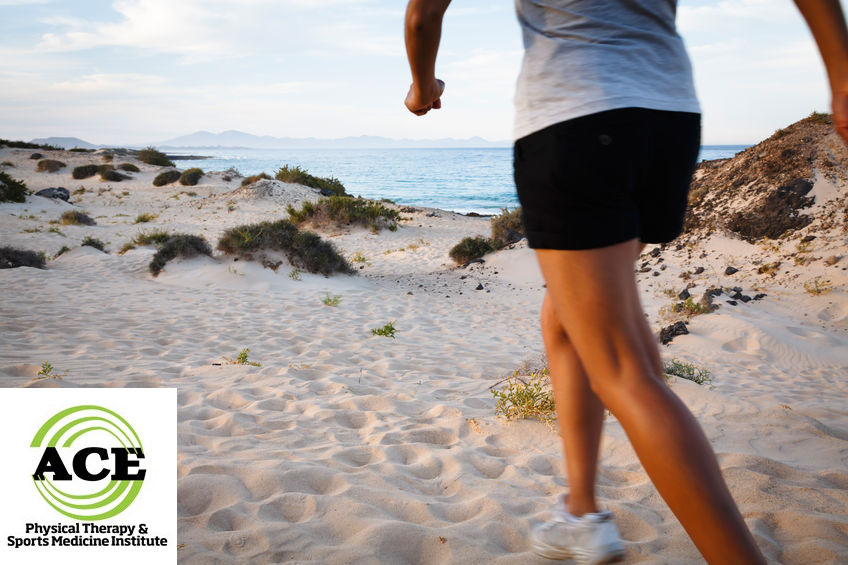BENEFITS OF WALKING ON SAND

Tid Bits of Info
- Walking for long distances in the sand should be performed in good supportive shoes.
- Walking on dry sand requires approximately 2.1 to 2.7 more energy expenditure than walking on a solid surface at the same speed.
- More energy is expended if you walk slowly on sand.
- The muscles are exercised more aggressively if you walk in loose sand and walk slowly.
- If you experience pain following a period of sand walking, seek treatment and advice from a Physical Therapist.
Waking up before sunrise and walking on sand can be a cool, relaxing way to start the day. As it turns out, walking on sand at anytime of the day is actually quite beneficial. It requires a great deal more effort and this can increase the strength of the legs, build muscular endurance and burn more calories compared to walking on a solid stable surface. If you choose to incorporate sand walking into your fitness routine, you should enjoy a variety of benefits as long as you avoid over-exertion.
Benefits of Sand Walking
Strength: Sand walking is beneficial due to the added stress and strain that is placed on the muscles, tendons and joints. The foot “sinks” into the sand and this requires the muscles to work harder to propel you forward for the next step. The soft sand is unstable which requires more neurological input to the foot and ankle complex. This instability helps to strengthen the ankle and foot muscles and enables the lower extremity to be able to move you forward. The entire lower extremity is forced to “work” harder on an unstable surface and it can enhance the strength throughout the leg. Most people perform sand walking without wearing shoes therefore the little muscles of the foot that help support the arches of the foot are strengthened, also.
Stress Reduction: Sand walking at the beach can be peaceful and relaxing, providing a perfect stress reducer. Stress can be extremely harmful to almost every bodily system that exists and if it is too high for too long the effects can cause permanent damage. Reducing stress can make one’s life much more enjoyable and healthy.
Proprioception: The instability that occurs when someone is sand walking creates an environment that is especially helpful to re-educate and stimulate more neuromuscular activity in the lower extremities. This is extremely important for people who have previously suffered injuries.
An injury or pain in any body part can negatively affect the neuromuscular activity, reducing the response within the muscle. This response of the muscle to the nerve is referred to proprioception. The muscles respond reflexively and it is not a cognitive process. The foot and ankle complex are very susceptible to this phenomenon and can be treated with sand walking.
Calorie Burning: Walking on sand requires more effort. This additional effort requires more energy, which in turn requires calories to be burned to produce that energy. The increase in calorie use can lead to a reduction in body weight. In many instances, the person who is sand walking will walk for a longer period of time due to the serenity of the environment.
Avoiding Injuries While Walking on Sand
Sand walking can cause injuries to the lower extremities if someone performs too much of it too soon. Like any other new or different activity, you should take your time to increase your walking distance and time in the sand. A crescendo of progression will enable the muscles and tendons to be prepared to handle the increased demand that is placed on them when sand walking is performed. The most common type of injury is an over-use injury to the muscles and/or tendons.
If you sustain an injury, you can seek diagnosis and treatment of the injury by a Physical Therapist without seeing your doctor. The Physical Therapist is a licensed medical professional who is educated and capable of providing a diagnosis and treatment plan for your injury. The treatment will address the symptoms and help to resolve them, but most importantly the protocols will seek to “fix” the problem. The routine will incorporate a series of exercises that will strengthen and stretch the involved muscles.
Walking on sand can be beneficial and healthy, but if it is done for too long or too great of a distance your lower extremities might be injured. Like all new activities, progress slowly and be able to get the full enjoyment and benefit of sand walking without experiencing an injury.

























